The farmer who invested £60,000 in merino wool and cashmere
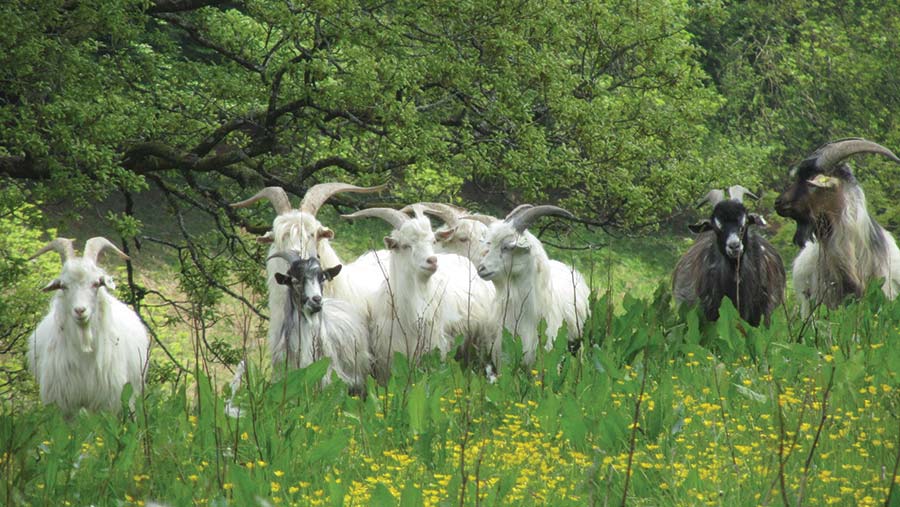 © Olivia Cooper
© Olivia Cooper She may be gentle and soft-spoken, but there is no denying the enthusiasm Lesley Prior has for her livestock and her business.
From scratch, she has carved out a perfect niche supplying retailers and designers with UK cashmere and merino.
Having moved down from East Anglia, she bought a farm in a poor state of repair with no fencing and ground which hadn’t been cared for.
See also: Wool’s environmental credentials could open new markets
“We wanted to do things properly and took a long time to decide – do what everyone else was doing or something completely different,” she explains.
Lesley opted to start with Angora goats. “I like goats – when you look them in the eye, they look back with attitude.”
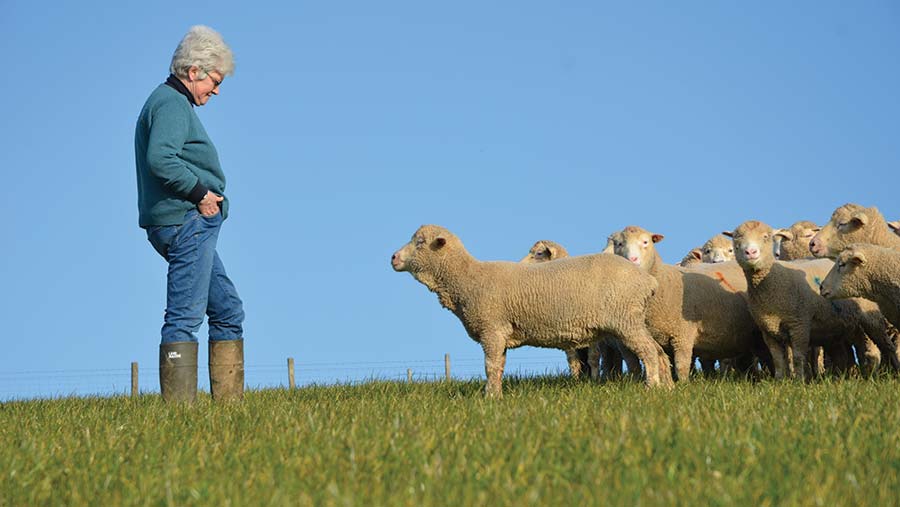
Lesley Prior with Merino ewes © Olivia Cooper
Angoras turned out to be too sensitive for the harsh Exmoor conditions, so to expand she looked for something more rugged.
She tracked down a top-quality flock of Cashmere goats in Scotland as a good fit.
Farm facts
- 62ha of pasture
- One part-time worker plus Lesley full-time
- 200 Cashmere goats, 250 Merino sheep
- Closed flock
- Wethers kept as wool/cashmere growers
She bought 50 goats and later decided to add wool to the mix by buying some Merino sheep deriving from 1950s imports into the UK, and combining them with modern semen from New Zealand.
“I got really interested in the science behind fibre quality and the importance of growing what our end user wanted,” she says.
“We had a great base from which to start, but the sheep needed a lot of work to get them up to the right standard.”
No textbook
Over the past 14 years, Lesley has built up an extensive network of contacts through the International Wool Textile Organisation and the Australian company Woolmark, and has travelled the world learning more about the industry.
“There is no textbook on how to produce top-quality wool or cashmere,” she says. It’s the same when it comes to marketing.
“You are on your own: If you don’t sell your product, no one else will. A great back story and top quality are both essential.”
Westcott Farm is now home to 200 Cashmere goats and 250 Merino sheep, although Lesley would like to build to 1,000 Merinos to meet growing demand.
But it’s a slow process as she’s very selective about which animals she uses. “We have a tight set of breeding objectives aimed at increasing quantity, quality and consistency.”
For the Merinos, she has regular visits from Australian experts – who help her keep on the right track as she classes her breeding sheep each year.
Individuals are wool quality tested and added to the breeding flock as appropriate, with rejects remaining as wool growers.
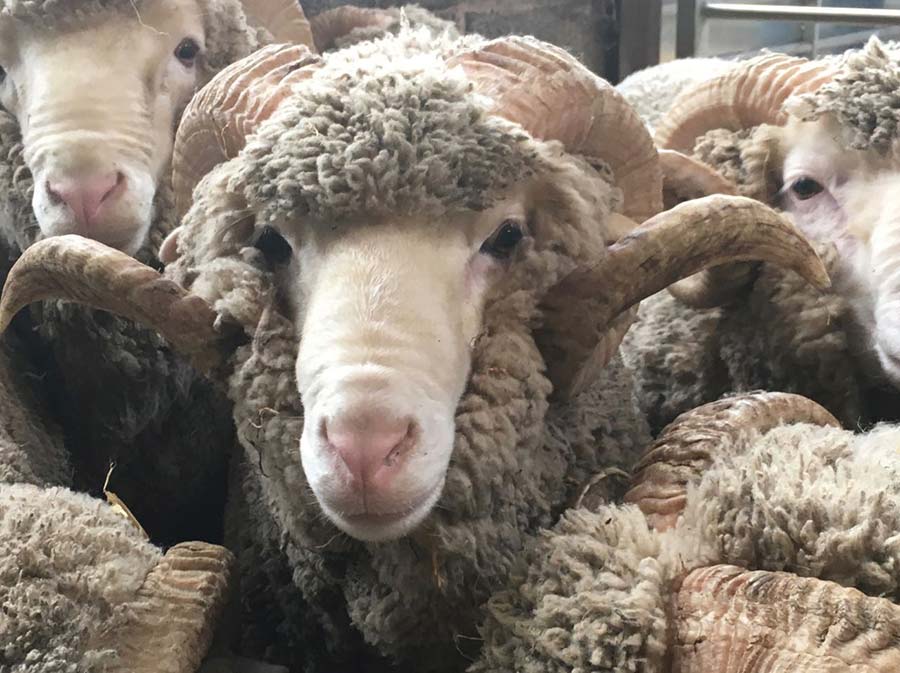
Merino rams waiting to be classed © Olivia Cooper
Imported genetics
Lesley selects about 40% of her ewes to breed from each year, choosing principally on wool quality and body size.
“My first sheep were very small and produced 1-1.5kg of wool a year – now some produce 4kg and the goal is 5-6kg.”
She imports new Australian genetics every two years, with a stud master helping to select the best semen and embryos.
When it comes to the goats, she is simply aiming to maintain the quality and genetic diversity, and breeds from about 40 of her best goats each year.
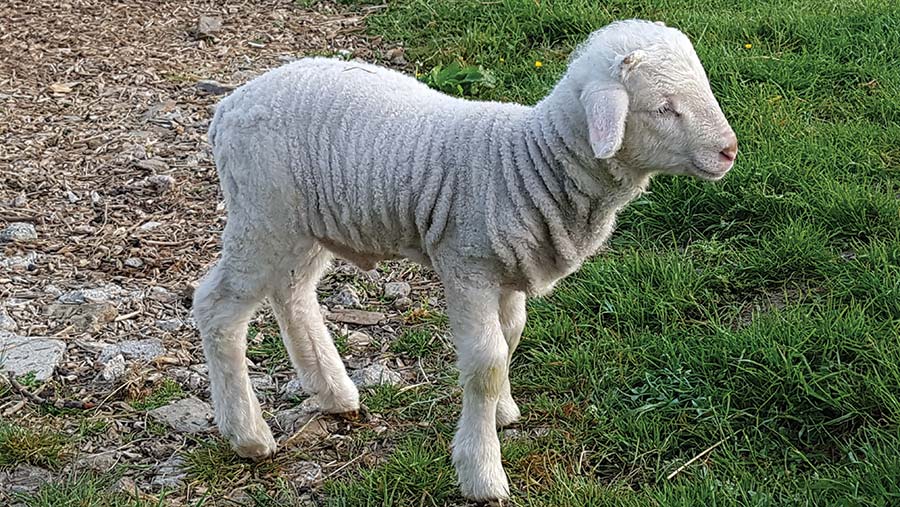
Merino ram lamb at two weeks old © Olivia Cooper
Both the goats and sheep average 175% offspring on the ground, usually producing singles in their first gestation and twins thereafter.
The goats have access to housing year-round and while they kid outside in June, they are brought inside at night to avoid predation.
The sheep are more of a moveable feast. “Merinos are good out-of-season breeders. We often attend overseas conferences in spring, so we fit lambing around that.”
Housed from Christmas, they lamb inside on deep litter straw, fed on silage and up to 400g of mixed ration a day.
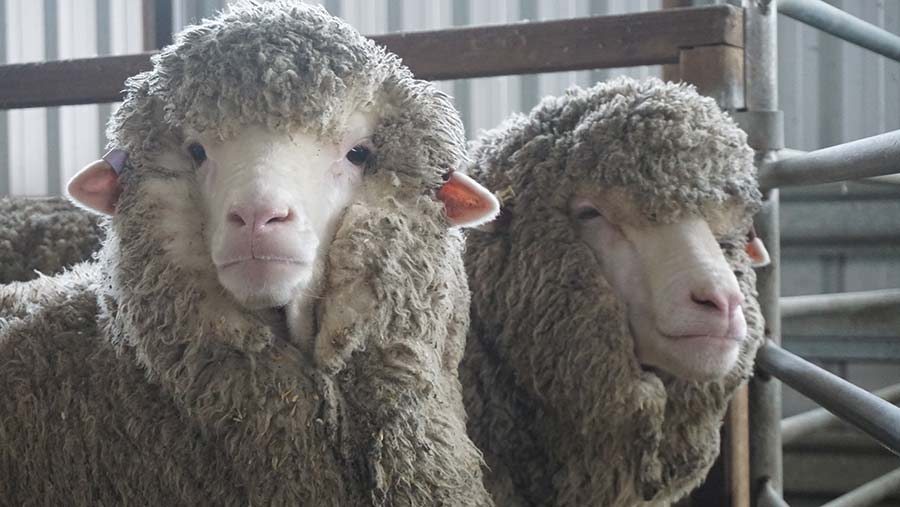
Merinos © Olivia Cooper
Flexible weaning
Lesley weans the lambs at four to five months old, although she takes entire males away earlier. Apart from entire males, kids are unweaned. “Family bonds are very strong in goats and removing kids causes real distress.”
This understanding of her animals’ needs means she has developed a strong bond with her stock. “I prefer soft shepherding as animal welfare is my priority.”
Shearing is carried out by a local shearer roughly every eight months – although pregnant ewes are also shorn six weeks before lambing as it develops a higher crimp in the lambs’ wool.

© Olivia Cooper
The job requires great care as the sheep’s skin is quite thin. “I weigh every fleece and record it – we have to know which sheep are giving good value.”
The goats are not shorn, but combed during their natural moult, which takes place as day length and warmth increase in the spring.
Pasture management
- Goats and sheep kept separate for biosecurity
- Goats prefer rough, mixed pasture
- 7ha of silage cut twice a year
- Rotational grazing
- Tired pasture overseeded or reseeded
- Traditional pasture preferred, as high-protein ryegrass lowers wool quality
“It’s very labour intensive and could take place any time between February or May, but you can guarantee it always coincides with lambing.”
End markets
Lesley aims to produce Italian Spinners-type merino, which is super and ultrafine wool, about 16.5 microns in diameter with a very high crimp.
This suits a wide range of end uses, from top-quality suits to next-to-skin sportswear. “It’s an increasingly rare type of merino in Australia, so very much a niche within a niche.”
The cashmere is spun in Yorkshire and sold as yarn to small design companies, while the merino ends up at Finisterre – a clothing company in Cornwall.
“We have plenty of offers to sell to other brands – the problem is keeping up with demand while sticking to our quality and animal welfare.”
When considering the financial, it’s a whole different ball game compared with standard British wool, explains Lesley.
“We have a long queue of customers and I’ve spent £60,000 on new genetics this year – I think it’s a good investment.”
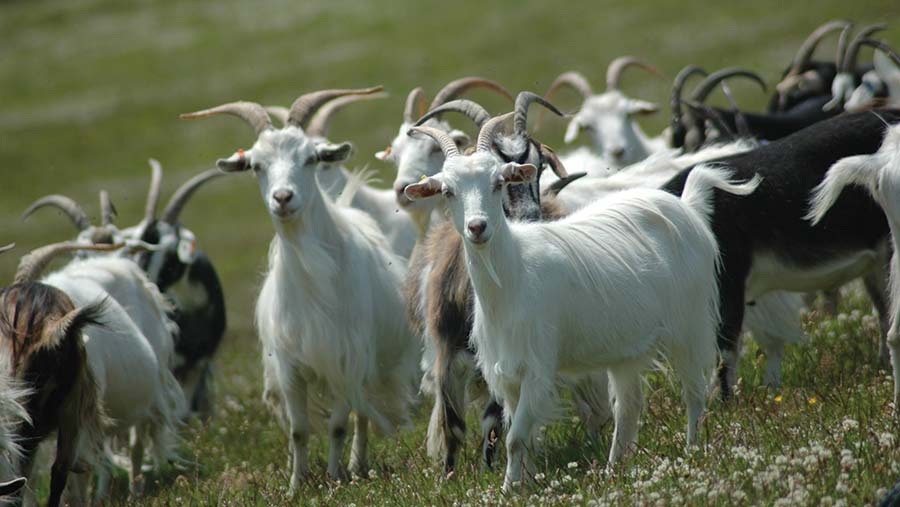
Flock of Cashmeres © Olivia Cooper
